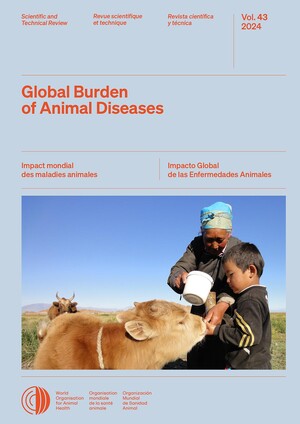
Soil mineral N dynamics and maize grain yields following Centrosema macrocarpum and Stylosanthes guianensis: Effects of different rotations and varying levels of N fertiliser
Abstract
In order to contribute to improved utilisation of herbaceous legumes, in particular Centrosema macrocarpum and Stylosanthes guianensis for crop-livestock systems, the present study explored a number of management options to improve the effect of legumes on subsequent maize yield. The objectives of the studies were to investigate the soil nitrogen dynamics and response of maize after different periods of legume growth and in a separate experiment to investigate the effect of inorganic N fertiliser on the maize grown after the selected legumes. In one experiment, the two herbaceous legumes were grown using two rotations––short (12 months) with a single forage harvest and followed by early maize; or long (15 months) with two forage harvests followed by late maize. More N was removed in the S. guianensis forage (140 kg N ha-1) compared to C. macrocarpum (90 kg N ha-1) although more N accumulated in the regrowth after harvest of C. macrocarpum (about 100 kg N ha-1––almost twice that of S. guianensis). Subsequently, the N status of maize plants (estimated using chlorophyll readings) in the first 37 days after sowing was higher for C. macrocarpum. Soil Nmin also tended to be higher after C. macrocarpum (maximum of 70 g N g-1) compared to S. guianensis (maximum of 50 g N g-1). This was not consistently reflected in maize grain yields. Under the experimental conditions, nitrogen appeared to be immobilised in the soil during the initial stage of legume decomposition, although this was less pronounced after S. guianensis. In a second experiment, first wet season (early) maize was grown after the same two legume species, and the interaction of preceding legumes with three levels of fertiliser N (0–30–60 kg N ha-1) applied to maize was assessed. Increasing fertiliser N levels had no clear impact on Nmin dynamics. Increased grain yield of maize in response to N addition was measured only after S. guianensis which may have been related to site characteristics. With respect to their potential to contribute to crop-livestock production, the two species differed in that S. guianensis was better with respect to year-round forage production, but C. macrocarpum had a greater effect on the subsequent maize yield. In order to improve the legume N contribution to maize at similar sites, the role of delayed N release during leguminous residue decomposition is emphasised.
Citation
Field Crops Research;78(2-3): 197-209










